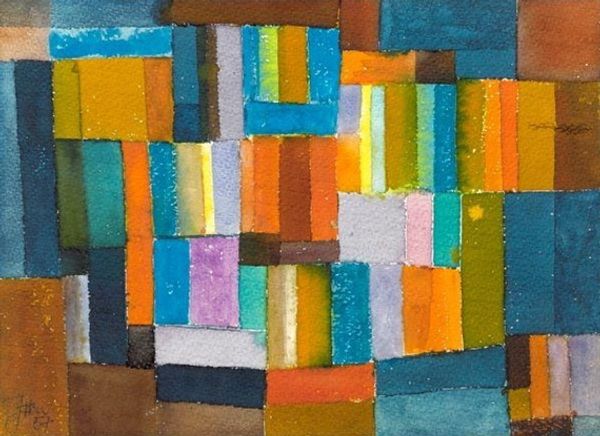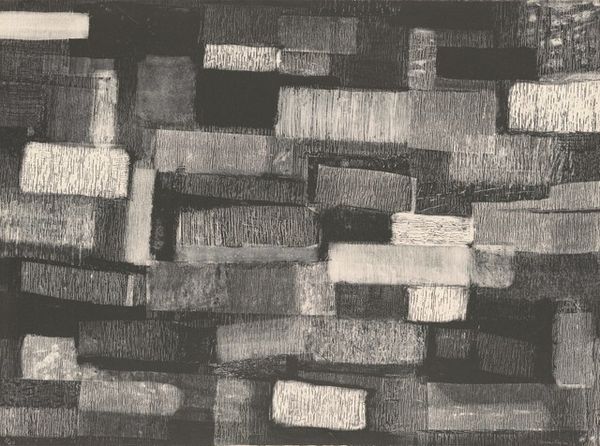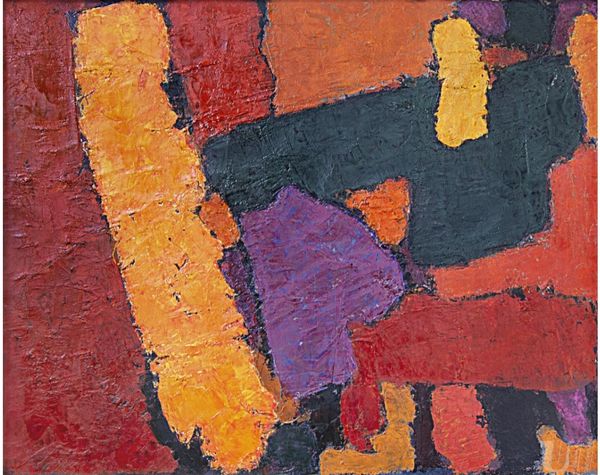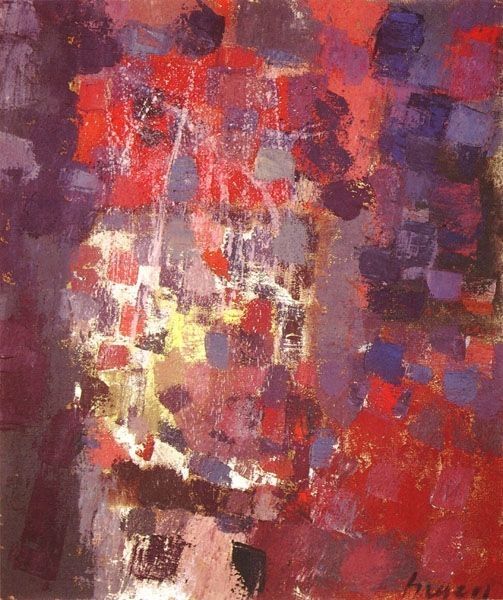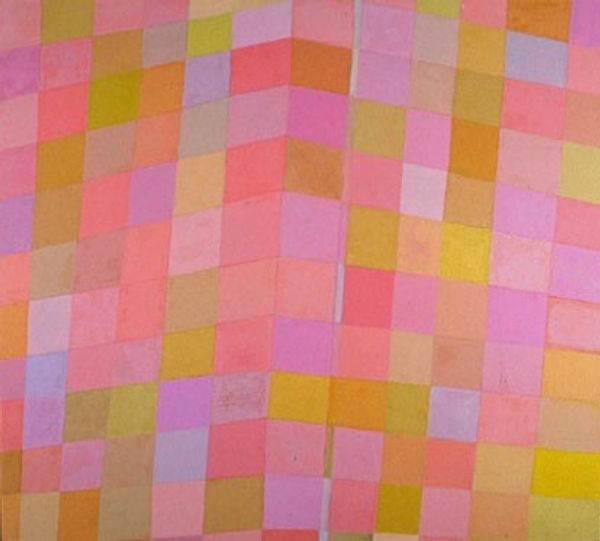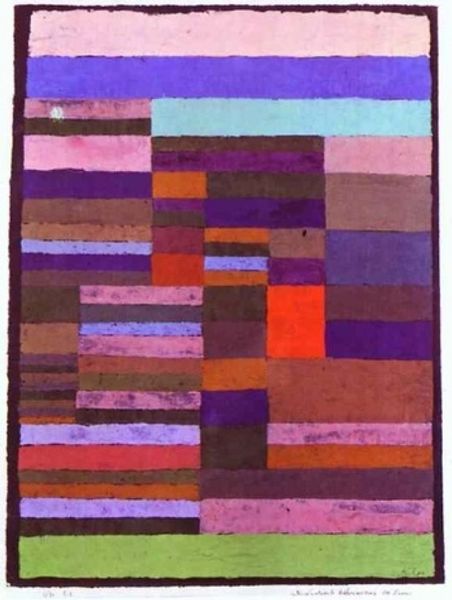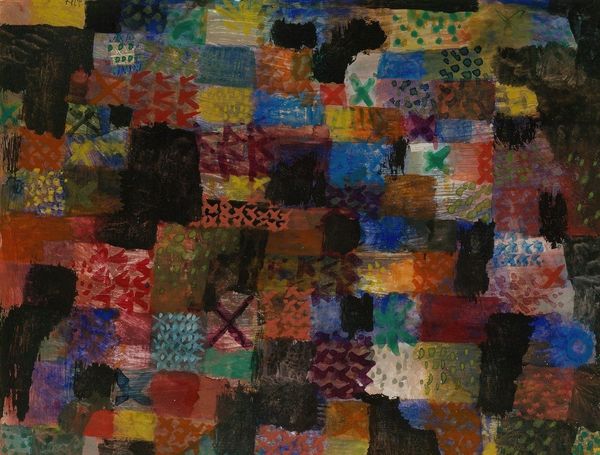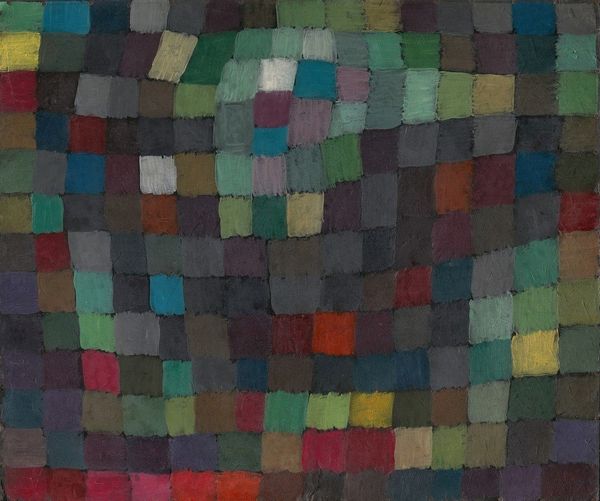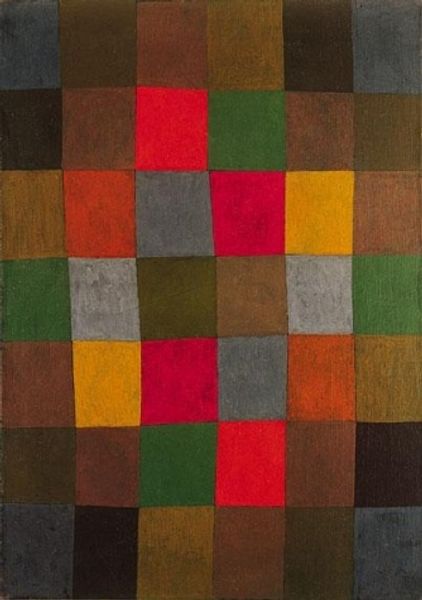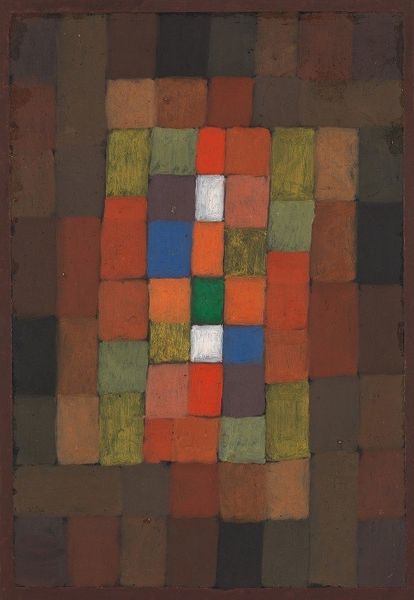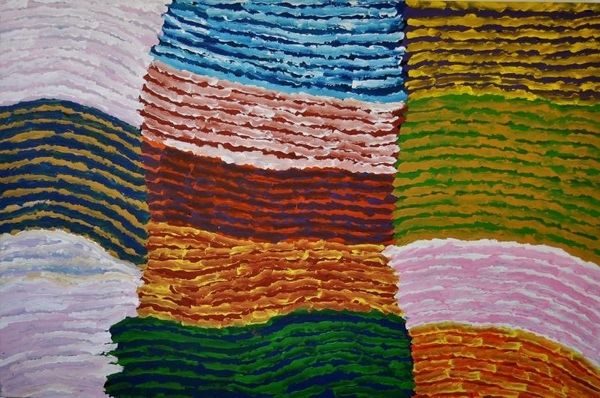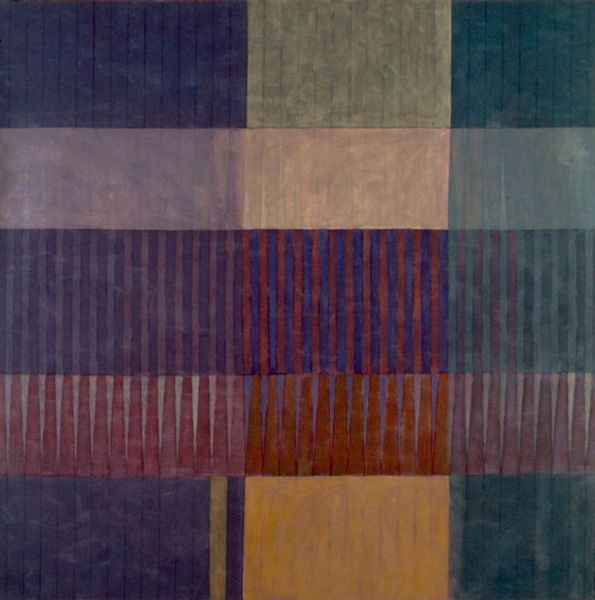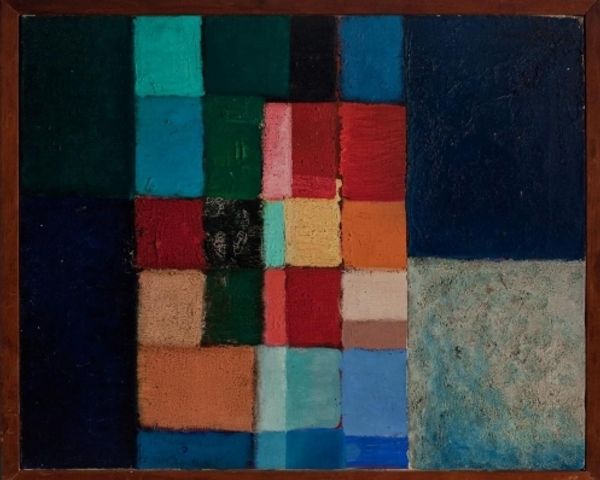
Copyright: Public domain
Curator: Well, what strikes you first about this piece? Editor: An immediate sense of fragmentation, but not in a destructive way. It feels like an excavation site revealing layers of earth and colored minerals. Curator: That's quite evocative. What you are seeing there is Paul Klee’s "Coming to Bloom," created in 1934 using pastel and ink. Klee’s exploration of materials allowed him to generate highly nuanced abstract images throughout his career. Editor: Knowing it’s from 1934 changes things. The abstraction feels deliberate, a retreat perhaps from the tumultuous politics of the time in Europe into the inner life. The blocks of color could even be seen as walled-off communities, or nations… Curator: I find it helpful to understand the context of production of his pastels and inks in the early 30s. Despite teaching at the Bauhaus, and then later in Dusseldorf, Klee was facing increasing stigmatization, and eventually, denunciation by the Nazi regime in Germany due to his perceived "degenerate" art, impacting the means with which he created work. The material process was intertwined with his lived experience. Editor: Exactly! And thinking about “degenerate art,” Klee’s exploration of geometric forms and vibrant color here, could be seen as a silent protest against the rigid order imposed by the rising totalitarian regimes. There's a kind of subversive playfulness in the title, "Coming to Bloom" when the socio-political climate was actively trying to shut down growth and diversity of expression. Curator: It’s worth considering the impact of industrial pigments during this period. The availability of mass-produced materials and the increased color range surely afforded new ways for artists to visualize feeling, and Klee seizes it here. Editor: And in doing so, transforms those materials into something more profound than just geometric abstraction—a coded language reflecting resilience and resistance through abstraction. What I initially read as an earthy landscape is imbued with political tension and optimism in the face of the repression of expression. Curator: Right. What starts as the appearance of order reveals on closer inspection an emotional charge borne from very real socio-political events and historical understanding of production. Editor: Thank you; it allows us to acknowledge art not as detached aesthetics, but as a powerful dialogue embedded in history and material realities.
Comments
No comments
Be the first to comment and join the conversation on the ultimate creative platform.
